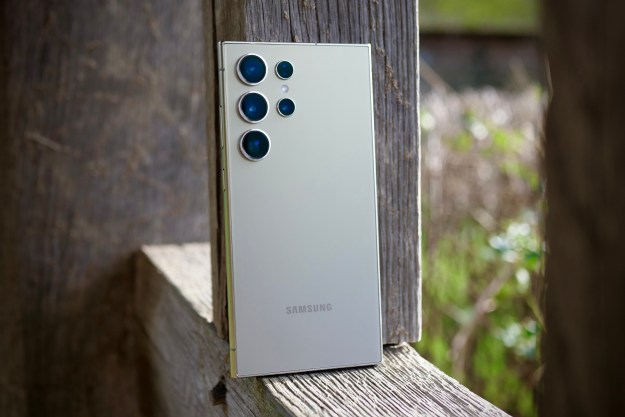
Hopefully, this was suitably embarrassing for everyone involved. Because it may be the push the tech industry needs to stop throwing money (and themselves) at famous faces, in the misguided hope we care what they do, say, and think about a product or company. Why do Apple, and its peers, bother anymore? We know that 99 percent of the time, the endorsement is just business, but still they roll them out at every opportunity, thinking the sight of a rich guy with a free smartphone will make us rush out and buy one too.
It won’t. Most of the chosen celebrities are clueless about tech, rubbish at being ambassadors for the brand, or worse, so annoying I’d go out of my way not to buy the damn product. Get someone who we respect, or at least has something meaningful or insightful to tell us, and perhaps we’ll pay attention. Instead, Apple welcomed the deeply irritating Bono, similarly dreadful Will.i.am, and people like Dr. Oz (who?) and CoCo Lee (why?) at the iPhone 6 event.
Taking off the gloves
It’s not only Apple that’s guilty of getting cozy with celebrities. Samsung’s at it as well, through a program it calls the “White Glove,” which if an article published in Fast Company is anything to go by, should really be called Brown Glove, there’s so much ego-stroking going on. White Glove is all about giving Samsung hardware to people in the public eye — “influencers,” Samsung calls them — and getting them away from using the iPhone. If they’re subsequently photographed using a Samsung device, or go on to become “disciples,” then all the better.
Most of the chosen celebrities are clueless about tech, rubbish at being ambassadors for the brand, or worse.
It seems Samsung takes the same approach to its celebrity endorsements as it does with the actual devices: Churn ‘em out, and hope one of them is a success. However, Samsung execs are hopelessly naive if they think we can’t see through this shameless, promotional flatulence.
Worse still, not even stuffing free gadgets into the hands of “influencers” guarantees them any allegiance. All the above names have been found surreptitiously using an iPhone, or simply bad-mouthing their freebie or benefactor. Surely this makes it all a massive waste of everyone’s time?
Do people pay attention, or not?
According to Martin Lindstrom, author of a book called Buyology, it doesn’t matter if the celebrity endorser turns out to be a hypocrite. “The positive effect seems surprisingly stronger than the negative effect,” he told CNN. Getting the right face next to a product could help attract a certain age group too. A study carried out in Hong Kong of people aged between 13 and 19 found the more attractive, amusing and expressive an endorser was, the better the group recalled the product itself.
Campaigns featuring household names can work well, particularly when those doing the promoting are connected to the product. Samsung’s Milk Music may be a lesser known Spotify-style streaming music service, but the star-studded promo video has been viewed 25 million times in just over two months.
Apple can get it right too. British actor and well-known Apple fan Stephen Fry wrote an early review of the iPhone 6 so glowing, it could be used to brighten up the winter months in Norway. It attracted more than 1,300 comments, was shared to more than seven million Twitter followers, and is pinned to the top of his profile. That’s a lot of attention gained from just one man’s opinion. However, in a recent survey of 1,000 Americans, 96 percent of those polled didn’t have any interest in reading what celebrities had to say about a product. So Fry’s gushing may have fallen on deaf ears.
Marketing teams need to look beyond vapid celebs
Putting the latest piece of tech in the hands of someone even nominally famous won’t stop, but if it really has to go on, can companies choose people who may have at least a vague clue about tech? Who advertises shampoo and conditioner? It’s not Larry David, it’s Gisele. When Puma wanted to drench someone in their golf apparel, they chose Rickie Fowler, and not David Beckham.
Yes, smartphones have universal appeal, but does that have to mean they’re promoted by everyone from Zooey Deschanel to someone-whose-name-I-don’t-know from a cable reality show? Of course it doesn’t. It’s just a lack of creativity on the part of the companies, who’re wallowing around in the celeb cesspool with the rest of media-land, thinking we care about what these non-entities have to say. Oh, and Tim? Wheeling out an aging rocker, just because you like him, isn’t any better.
Why not get some new faces involved? People who’re on the front lines of tech reporting and broadcasting, or even up-and-coming app developers and entrepreneurs, seem like prime candidates. I’d much rather see passionate, knowledgeable, and best of all, relevant people endorsing a phone, than yet another paparrazi-snapped picture of what’s-her-name from that-show using a Galaxy Note 3.
Sure, they may end up becoming paid shills too. But at least they’d be relatable paid shills, and that’s more than we’ve got right now.
Editors' Recommendations
- 5 phones you should buy instead of the iPhone 15 Pro Max
- The top 7 bestselling phones of 2023 were all … you guessed it
- iPhone Flip: what we know about Apple’s first foldable phone
- Don’t buy a Galaxy S24 Ultra or iPhone 15 Pro Max. Do this instead
- I’m a lifelong iPhone user. Here’s what I think about the Samsung Galaxy S24




